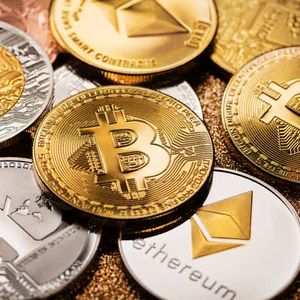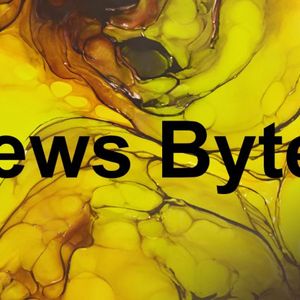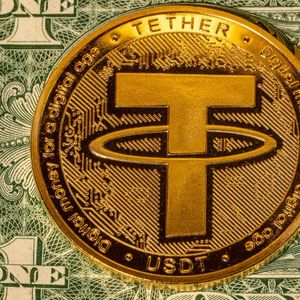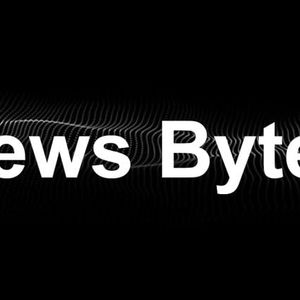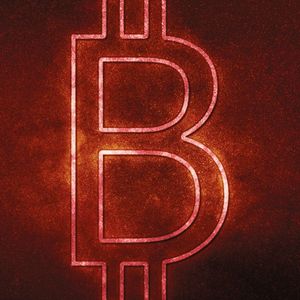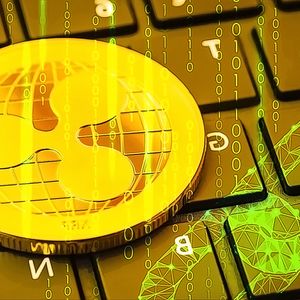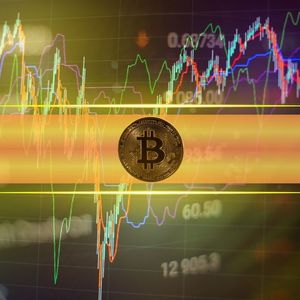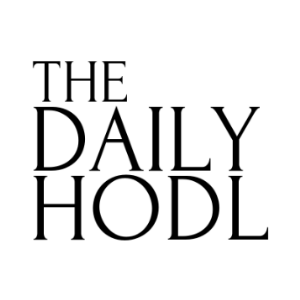2024-04-27 16:17:43
BITW: Holdings Assessment (Rating Upgrade)
Summary BITW offers investors exposure to 10 different digital assets - each of which are ranked among the top 25 in the space. With the overwhelming majority of fund allocation still going to Bitcoin and Ethereum, the fund's total return has performed largely in line with BTC. Of the fund's ten holdings, most have generally positive network trends. However, there are a few that look less than promising at this point. Back in October 2023, I covered the Bitwise 10 Crypto Index Fund ( BITW ) for Seeking Alpha and compared it with the Grayscale Digital Large Cap Fund ( GDLC ). My main takeaways from that article can be summarized as follows: BITW has a better methodology for designating fund inclusion than GDLC BITW has a lower weighting to Bitcoin ( BTC-USD ) and Ethereum ( ETH-USD ) than GDLC BITW historically trades at a larger discount to net asset value than GDLC In the time since publishing, BITW has taken shareholders on a 200% rocket ride higher. I'm not going to reiterate all of the same points made in my last article again. Rather, with this article I'd like to offer more updated assessments for each of the coin networks held in the fund. Data by YCharts Since my October article, only Solana ( SOL-USD ) has outperformed Bitcoin and even that underperformance has been proven to be relatively minimal compared to the daily volatility of SOL - which can often be 5 to 10% intraday. Given the relative underperformance from the alts, the fund itself has underperformed Bitcoin slightly despite the enormous weighting to the coin. In the following sections, fund weightings are according to Bitwise. Additionally, the market cap ranks and circulating supply metrics are from CoinMarketCap.com. Bitcoin Current weighting: 70.4% Crypto Marketcap Rank: 1 Circulating supply: 93.8% of max supply For Bitcoin, 2024 has had plenty of catalysts supportive of higher prices. In January the SEC's approval of spot ETFs has resulted in over 217k BTC coming into traditional financial products. More recently, the block reward halving that cut coin issuance down from 6.25 BTC to just 3.125 BTC per block was coupled with an explosion in fee revenue: Weekly Fees vs P/F Ratio (Token Terminal) During the week of the halving, Bitcoin generated over $140 million in fee revenue for miners - an all time high for the network. With that fee spike, Bitcoin's fully diluted price to fees ratio (market cap/fee revenue) fell to its lowest level since December. Fees do come at a user adoption cost: Monthly DAUs vs Transactions (Token Terminal) Bitcoin's monthly average DAU of 450k in April is down 26% from April 2023 and well below levels from as long ago as 2020. Ethereum Current weighting: 21.0% Crypto Marketcap Rank: 2 Circulating supply: 100%, non-fixed supply A recent fundamental catalyst for Ethereum that appears to be having a considerable impact on the network is the Dencun upgrade . Weekly Fees vs P/F Ratio (Token Terminal) Dencun made it less expensive for L2 scaling chains to publish to Ethereum's main layer. The byproduct of that has been less fees for Ethereum as L2s increasingly become more widely used than the main layer. As of 4/26/24, Ethereum's $202 million in fee revenue is down 16% from April 2023. This comes after March 2024 generated more than 3x the fees from March 2023. Monthly DAUs vs Transactions (Token Terminal) For Ethereum, there has been a noticeable uptick in DAUs since Dencun and March's 454k DAUs was a record for the network. Solana Current weighting: 3.6% Crypto Marketcap Rank: 5 Circulating supply: 100%, non-fixed supply Despite yet another network shutdown in February, Solana's price action reflects a blockchain network that has experienced an incredible resurgence over the last several months: Weekly Fees vs P/F Ratio (Token Terminal) In many ways, Solana was left for dead after the FTX fiasco. And yet, SOL is arguably one of the most interesting tokens in the entire market given the surging network fees and comparatively low 90x price to fee ratio. L1 Active Addresses (Artemis) In the chart above, the green bars represent monthly active addresses on Solana. In back to back months, Solana has averaged 1.2 million DAUs. This is more than both Bitcoin and Ethereum combined in each month. Ripple Current weighting: 1.6% Crypto Marketcap Rank: 7 Circulating supply: 55.1% of max supply Ripple ( XRP-USD ) is admittedly not one of the blockchain networks that I've been overly excited about in my time covering the industry. I covered the coin in March for Seeking Alpha. 30 Day Average Active Addresses (CoinMetrics) The network generates almost no fee revenue whatsoever compared with the networks already mentioned and 30 day Active Addresses has been under 40k for most of 2024. After briefly being competitive with Stellar ( XLM-USD ), Ripple usage has been in decline for two straight years. Cardano Current weighting: 0.9% Crypto Marketcap Rank: 10 Circulating supply: 79.2% of max supply 30 Day Average Active Addresses and Fees (CoinMetrics) Cardano's ( ADA-USD ) fundamental story is very similar to Ripple's from where I sit. 30 day Active Addresses have been in decline for two years straight and the network's fee generation is minimal. Avalanche Current weighting: 0.7% Crypto Marketcap Rank: 12 Circulating supply: 52.8% of max supply Avalanche ( AVAX-USD ) has been another Solana-like bright spot in the crypto market over the last year or so based purely on coin price performance from lows. That performance has since subsided in 2024 as network activity surges in December have been more of a flash in the pan than sustained: Weekly fees vs P/F Ratio (Token Terminal) AVAX's price to fee ratio has trended up in recent months and monthly DAUs have been comparable to networks like Ripple and Cardano. Polkadot Current weighting: 0.5% Crypto Marketcap Rank: 14 Circulating supply: 100%, non-fixed supply Polkadot Monthly DAUs (Artemis) Polkadot ( DOT-USD ) has a relatively small userbase compared to the other chains listed above. At just 7.6k DAUs for the month of April and minimal fee generation, I'm very surprised DOT is still valued at nearly $10 billion. Chainlink Current weighting: 0.5% Crypto Marketcap Rank: 16 Circulating supply: 58.7% of max supply Chainlink Weekly Transactions (IntoTheBlock) Chainlink ( LINK-USD ) is another network that I've covered for Seeking Alpha in the past. Unlike the other networks listed, Chainlink functions more as a data oracle than as a standalone blockchain. This is what I said about it back in July: Chainlink can serve as an important protocol for proof of reserves. With the well-documented blowups of centralized crypto firms like FTX and Celsius, there is likely growing demand for easily verifiable off-chain data. Token transactions have been trending down since November. The coin has roughly tripled since my article and I suspect most of the gains here have been had for the time being. Polygon Current weighting: 0.4% Crypto Marketcap Rank: 18 Circulating supply: 99% of max supply Polygon Monthly DAUs (Artemis) Polygon ( MATIC-USD ) is a network that I've generally been bullish through the years. The performance of the coin has been disappointing to say the least. Polygon Labs launched a second blockchain in addition to it's original PoS chain last year. The new chain, a zkEVM network, has had stagnant user growth this year - you can barely even see the zkEVM trend in the chart above. By comparison, the PoS chain has averaged over 1 million daily active addresses for each of the last two months. Interestingly, usage migration from zkEVM to PoS is a good thing for the MATIC token as the zkEVM network doesn't require MATIC for gas while the PoS chain does. All this said, considering the level of user adoption on the chain, Polygon still generates a very small amount of fees compared to leading networks mentioned above. Uniswap Current weighting: 0.3% Crypto Marketcap Rank: 23 Circulating supply: 59.9% of max supply Uniswap ( UNI-USD ) is a really interesting coin due the protocol's commanding lead in the DEX ecosystem. In February, I highlighted a vote to turn on fee sharing with UNI tokenholders. That vote ultimately did not pass and we've seen the spike in token price following that news completely retrace. More concerning now, the US Securities and Exchange Commission recently served core Uniswap developer Uniswap Labs a Wells Notice. Weekly fees vs P/F ratio (Token Terminal) The protocol itself generated over $150 million in fees during the month of March and April is closing in on $100 million. Assuming it gets there, March and April 2024 would be the first back to back $100+ million fee months for Uniswap since January 2022. To token currently trades at about 5x fees. Risks Getting beyond the understanding that all of these assets are highly volatile and hold significant risk of price depreciation long term, the biggest risk facing investors is likely the regulatory environment in the United States. With the exception of Bitcoin which had a fair launch, no ICO, and is sufficiently decentralized by several metrics, most of the coins on this list are either already under regulatory scrutiny or could potentially come under scrutiny in the future. Through various enforcement actions, the SEC has deemed most of these tokens to be unregistered securities already. These blockchains are all global and are thus not at the mercy of any one country, agency, or bureaucrat. But there are clear signs that US regulators have become more aggressive against crypto protocols in April and I suspect this will continue through the election. To the degree to which any of the regulatory headwinds have been priced in to any of these coins would be pure speculation on my part. Investor Takeaways As far as the individual coins in the Bitwise 10 Crypto Index Fund go, I'm of the view that this fund is fairly well allocated. Most of the tokens in BITW have favorable tokenomic models. However, not all of them have positive trends in network usage and I suspect the next 5-10 years will see substantial consolidation of users among these networks. There are some in this fund that I flat out don't expect to make it. That said, the alt allocations are still very small. For long term buyers who want exposure to a broad crypto fund, BITW may serve that purpose. However, there is the drawback that the fund doesn't stake the PoS assets like ETH, SOL, or ADA. But the tradeoff with the blockchain reward opportunity cost is the fact that BITW can be held in a tax-advantaged account like an IRA. If you're a long term believer in crypto, BITW at a 32.5% discount in a Roth isn't a bad way to express the idea.
Share at:
